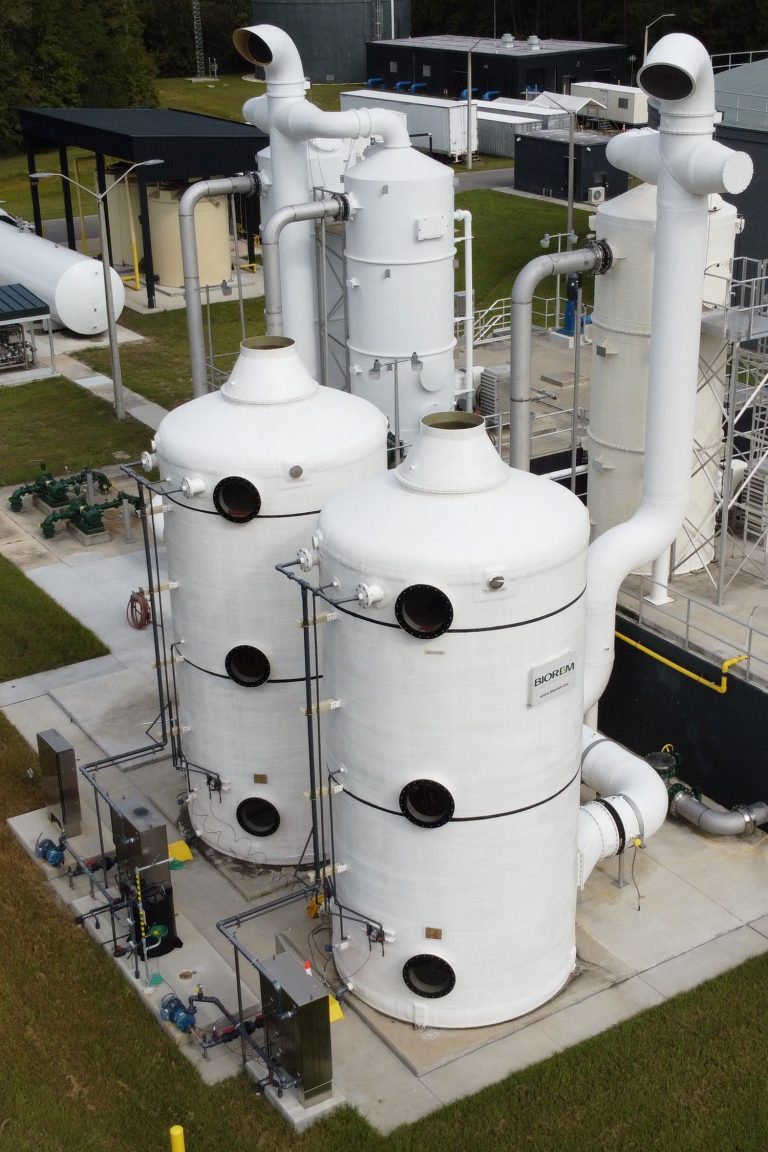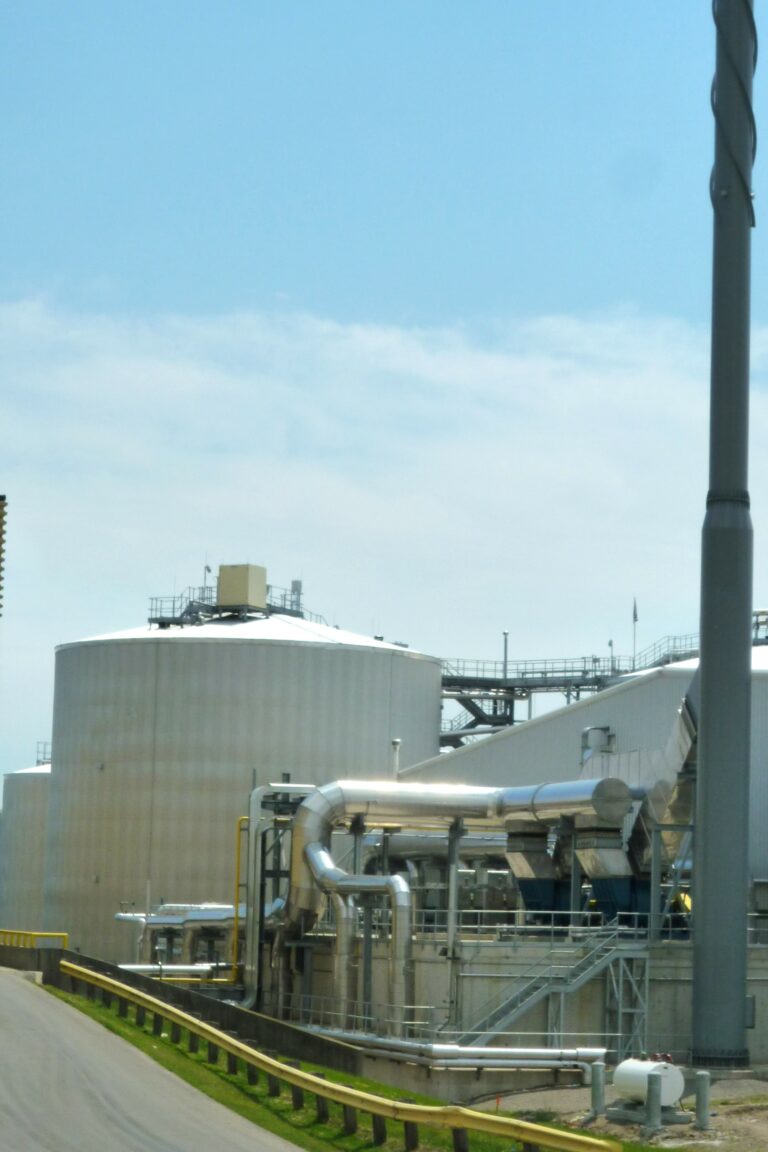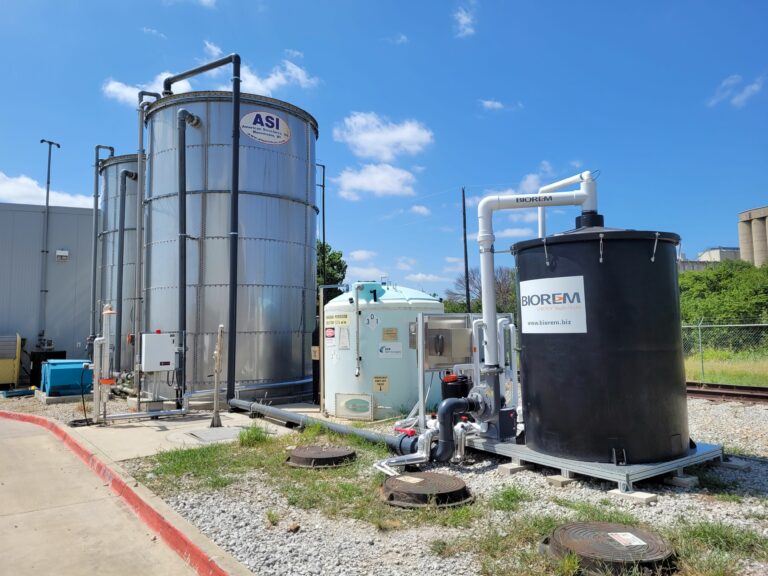Industries and Applications
Wastewater and Water Treatment Plants

The odorous compounds that are released at a wastewater treatment plant vary with the wastewater process as well as the wastewater loading. The most common areas of a wastewater treatment plant that require odor control are pumping stations, headworks and biosolids handling.
Odors from pumping stations and headworks are typically mostly caused by the release of hydrogen sulfide (H2S). H2S is very biodegradable, and has sufficient water solubility that treating H2S biologically is relatively easy. Biotrickling filters and biofilters are commonly used for H2S removal.
Biosolids produce a much more complex odor profile, with elevated concentrations of organic sulfur compounds (OSCs) such as methyl mercatpan and dimethyl sulfide as well as volatile organic compounds (VOCs) such as fatty acids. These compounds are still able to be removed biologically however their removal rates are slower than H2S and they require a neutral pH in the biofilm to be removed. Biofilters with longer empty bed residence times are typically installed in these locations, often with a dry scrubber polishing stage to remove the compounds that have low water solubility.
Water treatment plants that pump ground water from a well often have to remove dissolved sulfides that are naturally present in the ground water. This is accomplished by passing the drinking water through a degassifier where the hydrogen sulfide transfers from the drinking water into the stripping air. Once the H2S has been removed from the well water, there is still a foul air stream from the degassifier that requires treatment. This foul air stream can then be treated with a biotrickling filter, converting the H2S into sulfate.
BIOREM is a designer and supplier of both well water degassifiers as well as biotrickling filters to treat the degassifier air outlet.
Municipal Solid Waste and Waste to Energy

A municipal solid waste facility and a waste-to-energy facility each typically have a tipping floor where the waste materials are received from the trucks. In order to prevent fugitive emissions from the plant, the entire building is ventilated and maintained at a slight negative pressure. Air that is extracted from the building requires odor control treatment prior to release to the atmosphere.
The foul air typically contains volatile organic compounds as well as ammonia. If the ammonia levels are expected to be elevated (>50 ppm) a chemical scrubber with sulfuric acid addition is used to remove the ammonia prior to biofiltration. Engineered biofilter media allows the absorption and adsorption of odorous compounds, making them available for biological oxidation. Once the foul air has been treated in a biofilter it is released to atmosphere from an engineered exhaust stack. The stack is designed with air dispersion modeling software to ensure a certain maximum concentration is not exceeded beyond the facility’s fenceline.
BIOREM boasts the in-house expertise for designing and delivering large biofilters organics facilities. BIOREM’s scope can include the biofilter media, instrumentation, controls, ductwork, pre-cast concrete roofing, site layout, air dispersion modeling as well as comissioning, training and performance testing services.
In addition to designing and supplying biofilters for organics facilities, BIOREM is also a supplier of biological biogas desulfurization systems that are required at waste-to-energy facilities prior to the gas being used in a boiler, gas engine or combined heat and power generation system.
Industrial Applications
There are many industrial applications which require odor control such as
- Pet food manufacturing
- Rendering plants
- Food & beverage
- Petrochemical
- Semiconductor
- Chemical production facilities

